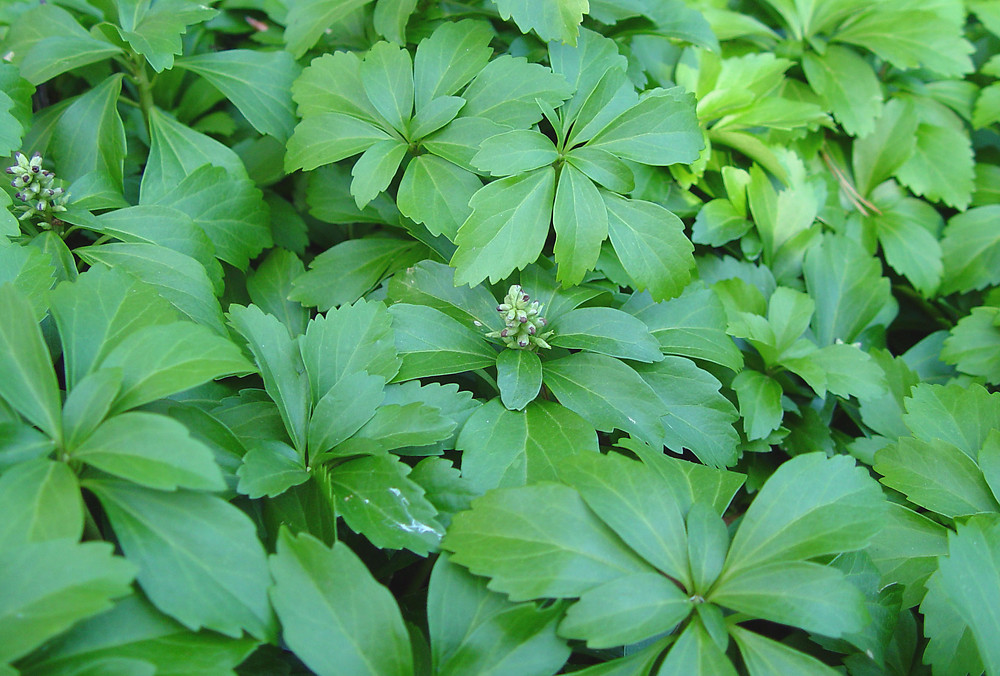Invasive Plant of the Month Spotlight – Japanese Spurge (Pachysandra terminalis)
By Renee Sandelowsky and Helen Varekamp
Renee Sandelowsky and Helen Varekamp are Bayfield residents and local volunteers. They are writing a monthly series of articles, for the Canadian Coalition for Invasive Plant Regulation, about the benefits of planting native species of plants and removing invasive species. This month (August 2025), their focus is the invasive plant Japanese Spurge (Pachysandra terminalis).
Japanese Spurge, also called Pachysandra, is a rampant groundcover, originating from Asia. It is an evergreen perennial herb in the Boxwood family that can reach twelve inches in height and spread to form dense mats. Flowers are white and appear between March and April. Fruits are on terminal branches and are extremely small; the plants reproduce vegetatively through underground stems and roots. This plant is often used in shade gardens. It can regenerate from the smallest piece of root, making it especially easy to spread, and hard to get rid of. Japanese Spurge can escape into forested areas and meadow edges, is resistant to deer, and therefore speeds up displacement of native vegetation.
Despite this invasive nature, Japanese Spurge is still available for sale in garden centers. Do not buy this plant and do not trade it with your neighbours!
Japanese Spurge is toxic to cats.
HOW TO MANAGE JAPANESE SPURGE
Managing Japanese Spurge is quite achievable with persistence and a multi-step approach:
Manual Removal: Removal is most effective when the soil is moist. For small populations, dig up the plants and roots – which are white and easy to see – and remove manually. Check in the coming months for new plants emerging, as even the smallest bit of root can re-sprout. Do not put plants in the compost or municipal green waste! Put them in the garbage instead.
Smothering: Another option for small or larger populations is to cover infested areas with tarps or cardboard to block sunlight. Cut the pachysandra back to ground level before smothering.
Herbicide Treatment: Difficult to reach, or large areas may be treated by herbicide. Use herbicides only as a last resort, following local regulations to minimize environmental harm.
After removal, replant the area with regionally appropriate native plants. This step is essential to prevent re-infestation and to restore ecosystem health. Native plants will also attract pollinators and wildlife, improving biodiversity in your garden.
A good choice would be Wild Ginger – Asarum canadense
LEARN MORE AND TAKE ACTION
Education is key to combating invasive plants. Learn to identify invasive species and choose native or non-invasive alternatives for your garden. Focus on managing one or two invasive plants at a time and be patient—successful eradication takes time and persistence.
For more information, visit:
Ontario Invasive Plant Council www.ontarioinvasiveplants.ca
Canadian Coalition for Invasive Plant Regulation www.ccipr.ca
Grow me Instead guide www.ontarioinvasiveplants.ca/resources/grow-me-instead

